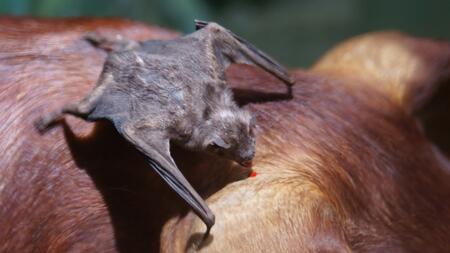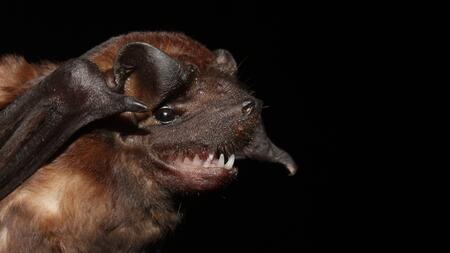New study reveals bats are key players in cross-species spread of morbilliviruses
Bats in the tropics of the Americas are a reservoir for morbilliviruses—a genus of RNA viruses that includes the human measles virus. However, their role in spreading morbilliviruses to other mammalian species is unclear. An international team of researchers led by Charité - Universitätsmedizin Berlin and the German Center for Infection Research has now studied the spread of morbilliviruses in bats and monkeys in Brazil and Costa Rica and discovered new virus species and host switches from bats to other mammalian species. The scientists call for increased surveillance and experimental risk assessments of reservoir-bound morbilliviruses. The study was published in Nature Microbiology on May 27, 2025.
Morbilliviruses are highly contagious viruses that cause serious diseases in humans and animals. Prominent examples include measles in humans, rinderpest in cattle and canine distemper in carnivores. Although rinderpest has been successfully eradicated, other morbilliviruses continue to pose a significant threat to human health and livestock. Despite their wide distribution among various mammalian species, little is known about their main hosts, geographical distribution, and their potential to jump to new species.
The evolution of morbilliviruses in bat species of the American tropics
The new study examined more than 1,600 bats from Brazil and Costa Rica. The researchers found evidence of infection with previously unknown morbilliviruses in several species of bats—including vampire bats, whose blood-sucking behavior facilitates contact with other animals. Antibodies against a newly discovered vampire bat morbillivirus were detected in more than one-third of the vampire bats examined, suggesting that such infections are common and usually not fatal.
Morbilliviruses closely related to bat morbilliviruses found in monkeys: danger for humans?
Morbilliviruses were also found in wild monkeys that died in Brazil. While there is no evidence that the viruses caused the deaths, genetic analysis revealed a close relationship between the monkey morbilliviruses and those from bats. Laboratory tests showed that, unlike the bat morbilliviruses, the monkey morbilliviruses can use the same cell receptor as the measles virus, indicating a potential risk of transmission to humans. Fortunately, further testing revealed that antibodies produced by prior measles or distemper infections can neutralize bat morbilliviruses. This suggests some cross-immunity, which could facilitate vaccine development.
"Although morbilliviruses in monkeys can apparently use the human measles receptor, it is too early to determine if they pose a threat to humans," says Dr. Wendy K. Jo, a postdoctoral researcher at the Charité – Universitätsmedizin Berlin and the study’s first author. "However, this study highlights the importance of monitoring such viruses in wild animals."
Cross-species transmission is more common than expected
Evolutionary analyses of the study suggest that bat morbilliviruses, as well as those from carnivores and ungulates, have crossed species boundaries several times in the past. This includes transmission from bats to pigs and monkeys. Similar host switches involving bats are believed to have resulted in the emergence of human diseases, such as SARS and Ebola, in the recent past.
"Our results show that morbilliviruses are more common and more diverse in bats than previously thought—and that in rare cases they can jump to other animals," says Prof. Jan Felix Drexler of Charité – Universitätsmedizin Berlin, study lead and scientist in the research area "Emerging Infections" at the German Center for Infection Research (DZIF). "This is not a reason for panic, but a clear call for vigilance."
The researchers advocate for increased surveillance of pathogens in wildlife, targeted risk assessments and, in the long-term, the development of protective measures, such as vaccines, for both humans and livestock.





